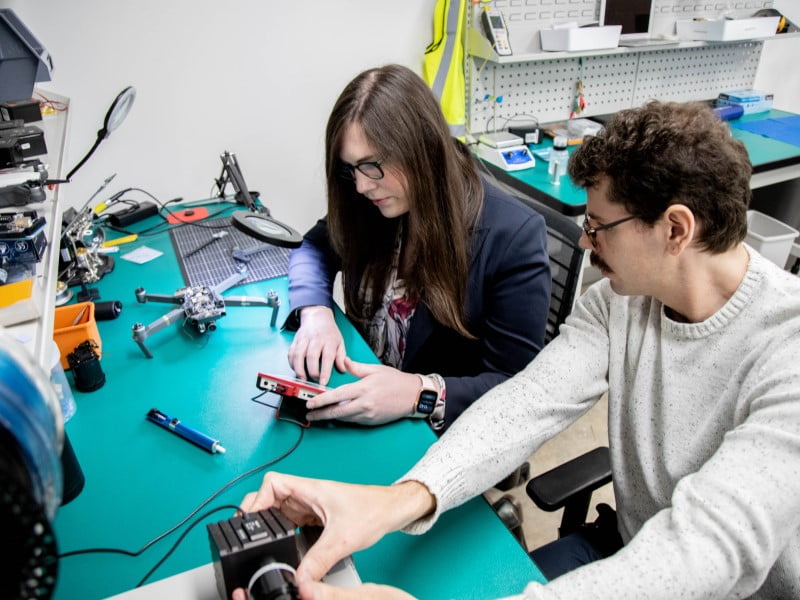Local companies have called on the federal government to aggressively support local dual-use technology exports to reach an internationally competitive scale, as a pathway to developing Defence capability.
The views were expressed across several discussion panels hosted during InnovationAus.com’s ‘Capability Papers Showcase’ event on Thursday.
Innovative laser company AIM Group’s co-chief executive and co-founder Dr Daniel Jae called on the government to improve Australia’s Defence technology balance of trade. This could include legislated local content requirements or calling on other countries to buy Australian through international trade agreements or other negotiated channels.
He flagged that Defence industry does not operate on a level playing field.
“Free market is best product wins, but Defence does not work like that. It is protectionism all the way down,” Dr Jae said.
“Every other country makes sure that there is some level of local content, there is some level of local manufacture, there’s some distributed supply.
“America is amazing… at grabbing technology and bringing it over to their country. We need to acknowledge that we need to be aggressive in how we stop that from happening.”

Q-CTRL chief executive and founder Michael Biercuk believes that Defence’s existing Global Supply Chain Program (GSCP), which aims to increase the number of Australian small to medium-sized enterprises in the supply chains of multinational Defence prime contractors, is excellent in spirit but “structurally doesn’t work”.
He stated that Q-CTRL has been rejected by prime contractors in favour of developing the capability in-house, despite initially being brought in under the GSCP.
Professor Miftar Ganjia, who lead the University of Adelaide and Defence Science and Technology Group’s Centre for Advanced Defence Research in Ultrashort and Short Pulsed Lasers, argued that while we should focus on boosting local capability, we shouldn’t just replicate capabilities that are already widely supplied by other countries. Rather, the emphasis should be in areas that Australia is a world leader in.
“Let’s say a typical laser, it’s out there for industry for machining that Germany uses heavily for example. We don’t want to redo that,” Professor Ganjia said.
“We do have to be smart in terms of what we are trying to innovate and what we’re trying to push through the industry as in manufacturing, because if we blindly go and pump something that does not have market outside of Australia, we’re just doing a shortfall.”
Mr Biercuk agreed that Australia should look for opportunities “to enter niche markets” but that the country also shouldn’t shirk from competition with capabilities that already exist internationally.
He called on Australian innovators to “be a little bit bolder than we have historically”, highlighting his company’s success in supplying infrastructure software to IBM, effectively beating its in-house development team.
In a later panel, Australian Drone and Robotics co-founder and chief executive Dr Joe Cronin called for discussion of Australian Defence capability to be expanded, beyond supplying the Department of Defence. By focusing on developing Australian capability and SMEs for export, rather than just meeting the needs of Defence “when it’s needed, it’s already here”.
Similarly, Hypersonix managing director David Waterhouse argued that to build disruptive innovation by developing cutting-edge technologies “you’ve got to be globally relevant”.
He flagged that Australia is currently “subscale in just about everything, whether we’re talking about defence or commercial”, and that the country should look to successful government defence investment models from overseas such as the United States.
In particular, he wants Defence and universities to stop trying to take ownership of Defence industry intellectual property (IP).
“As a business guy that’s a blocker for me. It’s stopping me from working with parts of Defence, with DSTG, universities, because they all want to grab my IP,” he said.
“I’m saying well wait a second, what are you going to do with the IP? Can you please name an example of a university that successfully commercialised it… It’s bad enough them wanting the IP and blocking me from doing things, but they’re not even making value.
“I really think we need to do some critical thinking on where and how we use IP to grow Australian capability, but it’s got to be on a global stage. We shouldn’t be focused on just the Australian market because we’re so small.”
Do you know more? Contact James Riley via Email.

